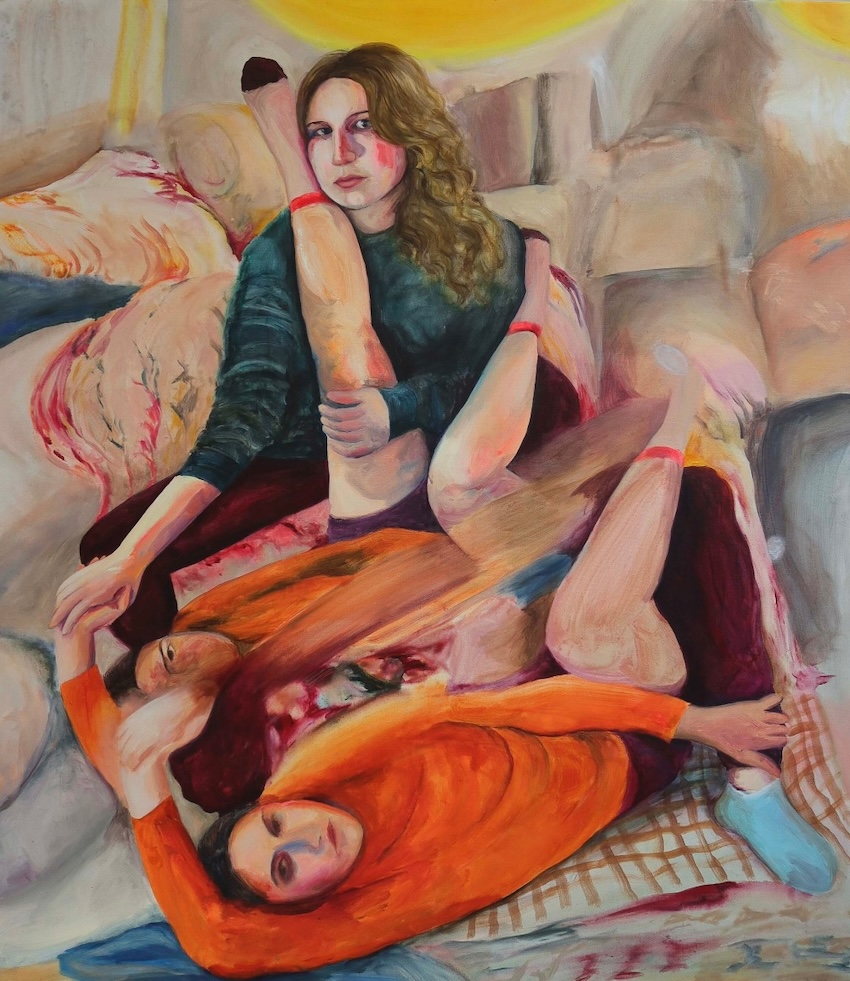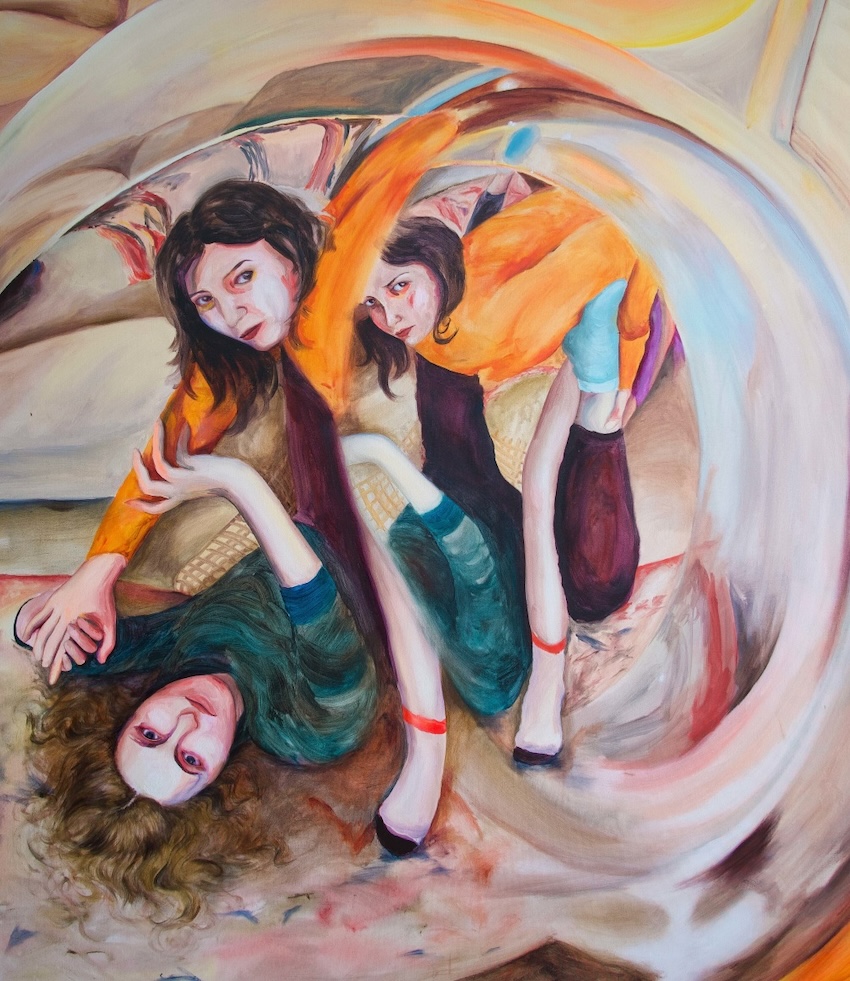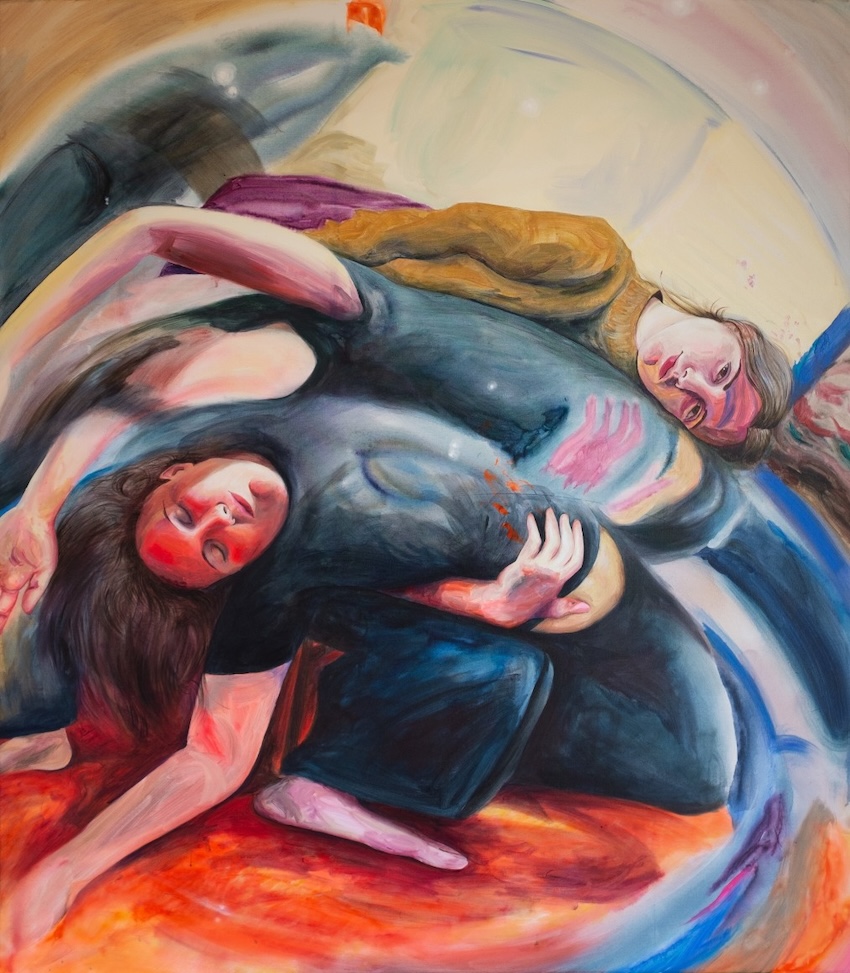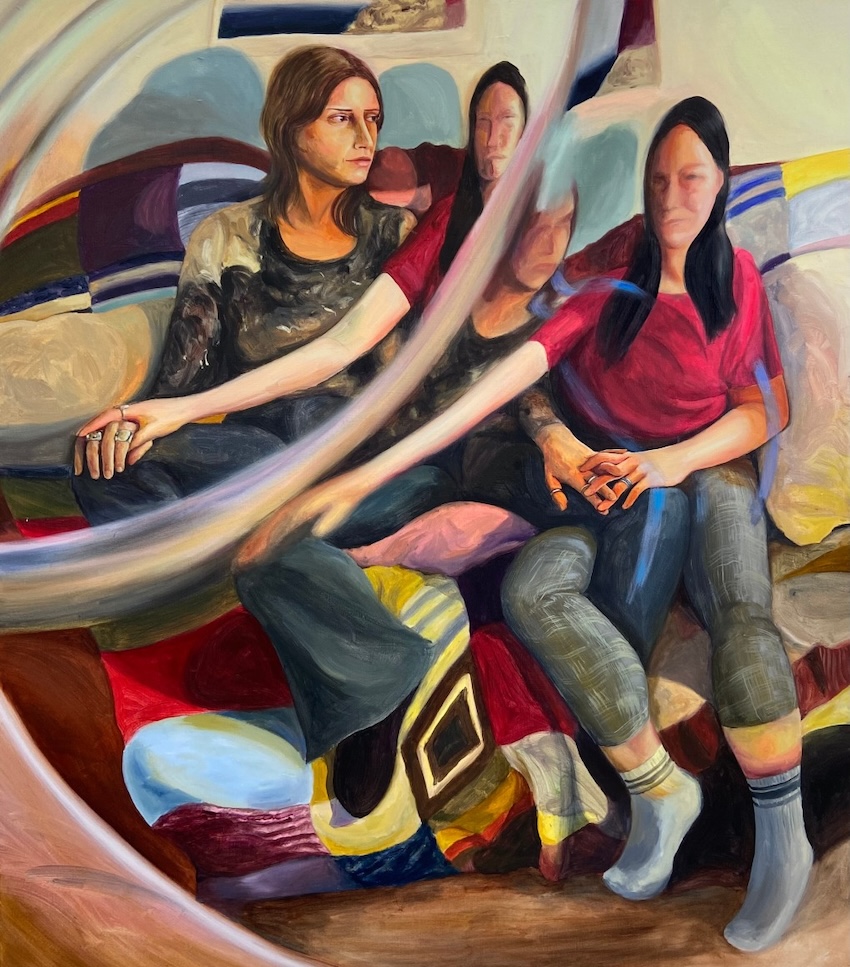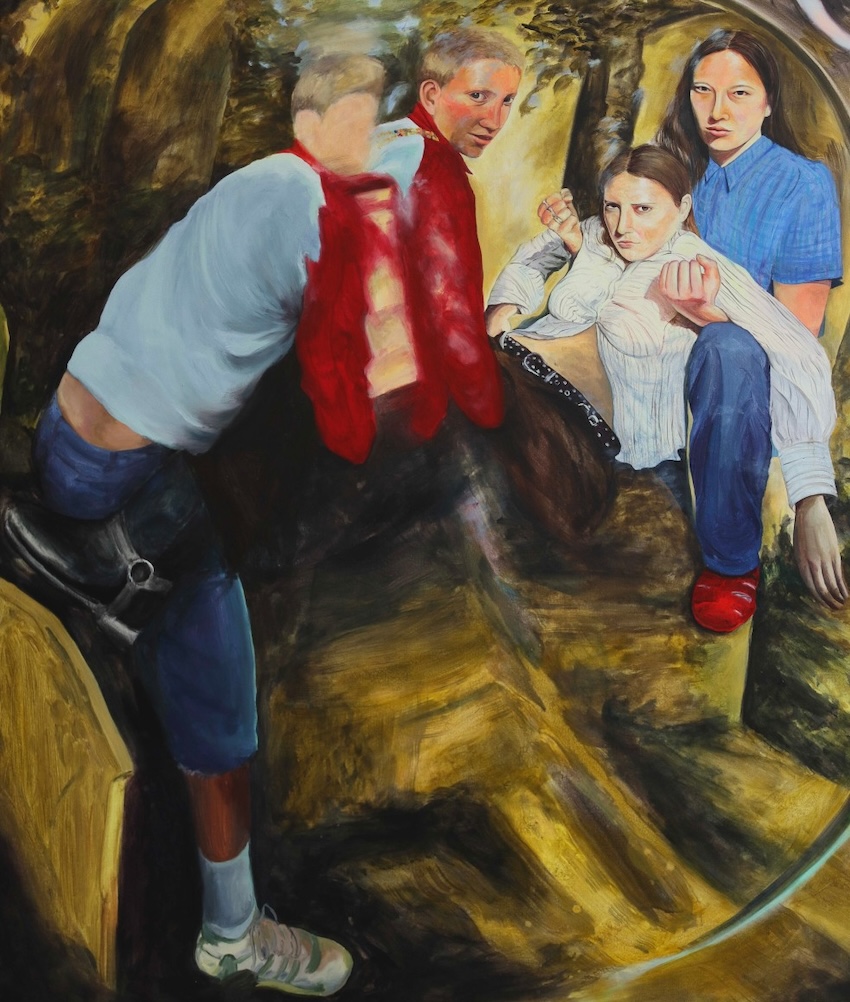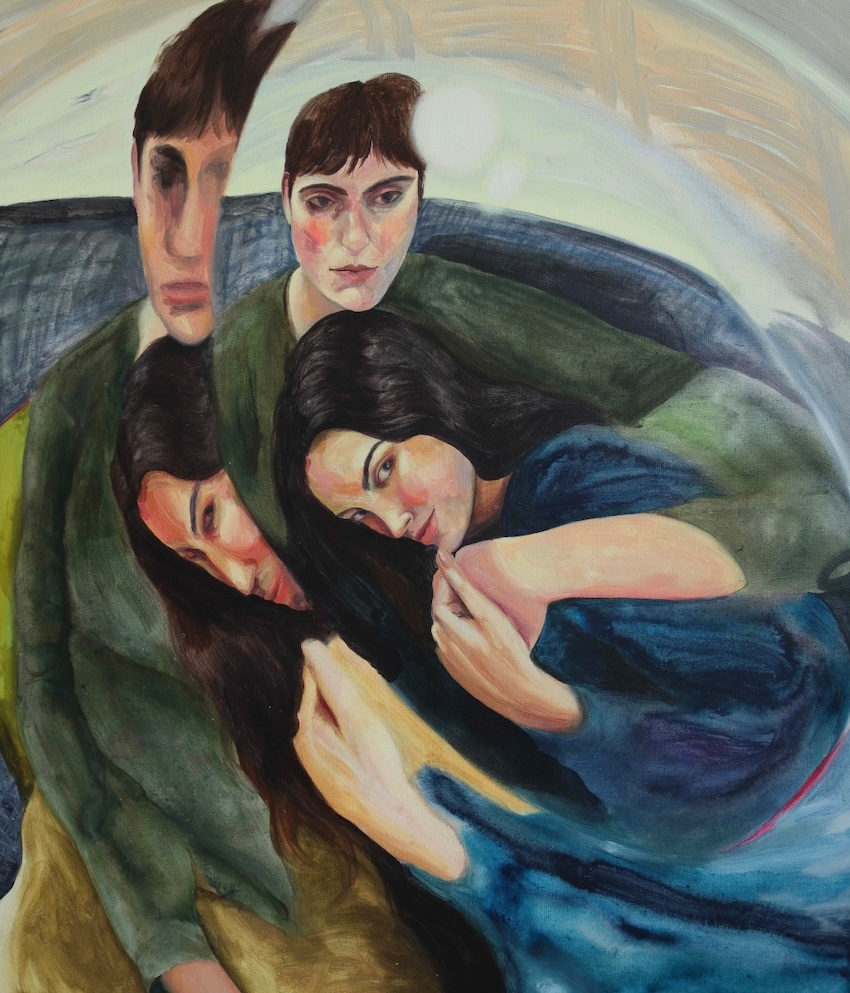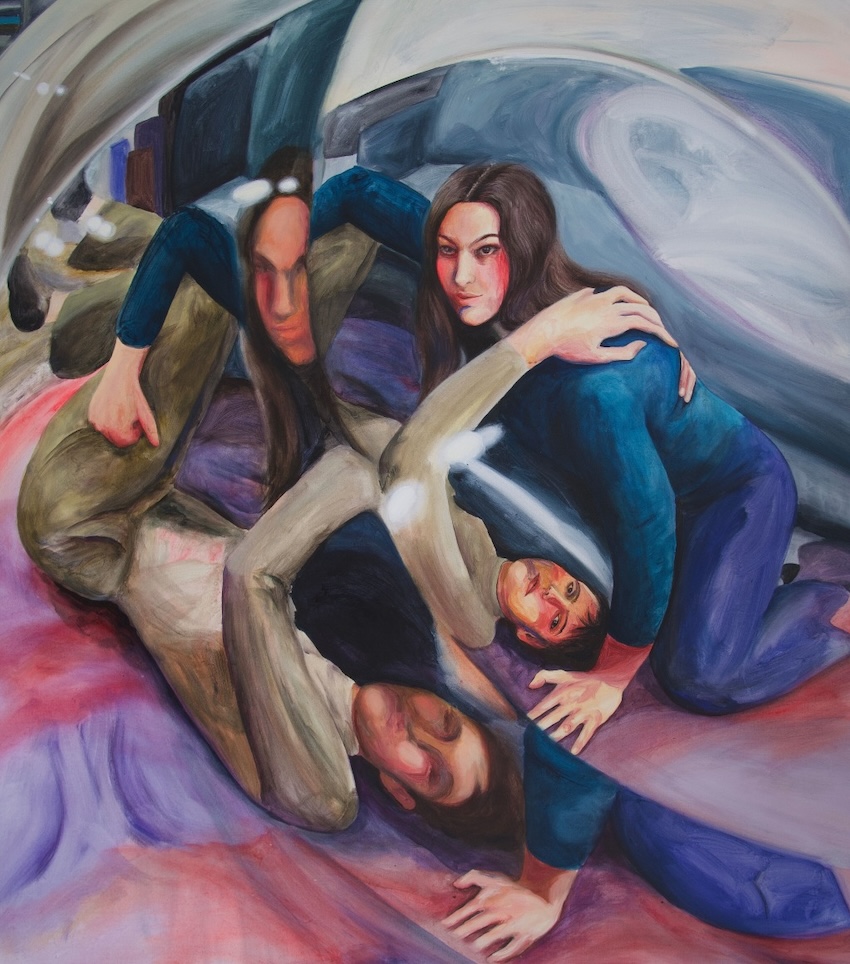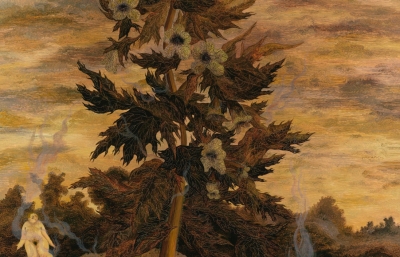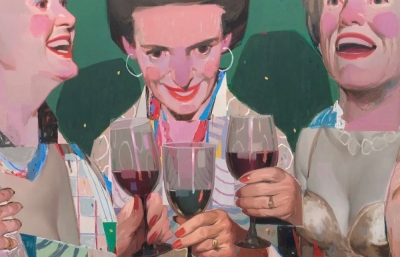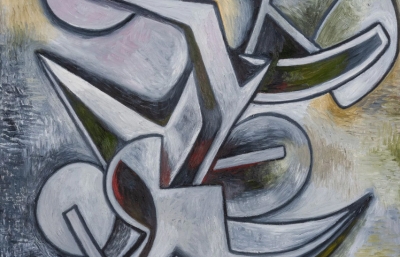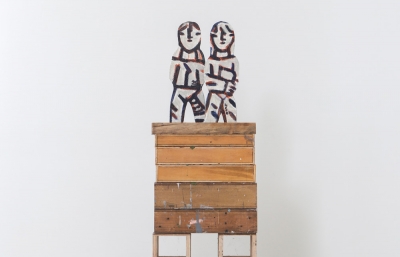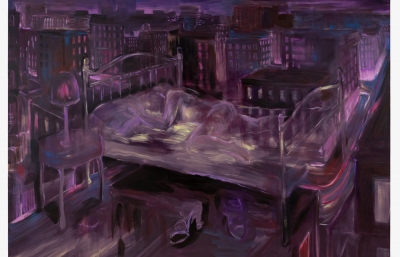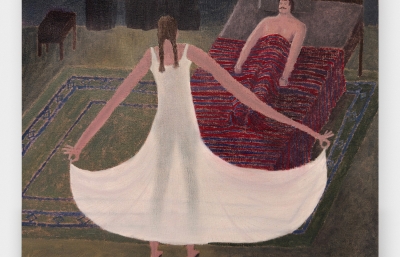Fredericks & Freiser is pleased to announce the first New York solo exhibition of new paintings by Amélie Peace (b.1997, Cannes. Lives and works in London). A new aesthetic of care comes to life in Peace’s work, as the works navigate modern relationships and questions of what we owe to and can accept from one another. In her whirlwind paintings, figures appear in narrative scenes of entangled bodies that lift, caress, cling to, or weigh upon each other. Each interaction appears as if out of a dream or a memory in which the figures have just come into a new way of existing in their bodies, both together and separately. These “intimacy-landscapes” serve as almost indexical maps tracing human connection and sexuality. Shadows of the touch of a hand remain imprinted on another’s body. Instances of warm tenderness are tempered by cool detachment. The exact nature of any specific scene remains open for the viewer’s imagination to interpret alongside the figures. As a group, the works express a conviction in the lasting impressions of physical touch and emotional entanglement.
Peace is on the vanguard of contemporary painters thinking through the ways that our society fosters a desperation for unity with others but at the same time, a real desire for individual separation. Her figures confront this tension, simultaneously attracting and repelling one another. The technical skill of her compositions underlies this push-and-pull. Parts of the composition remains blurry, but key details come into crystal focus. Faces and hands often emerge into this spotlight. The overall effect is one of viewing these subjects under the prying gaze of a magnifying glass. The ripples of this magnifying glass sometimes interrupt the scene, resulting in bodies stuttering across the canvas in multiple iterations that contribute to a sense that time itself is becoming warped.
Rigorous composition and dreamlike realism distinguish Peace’s paintings as a transhistorical contemplation of human connection. In this pursuit, her œuvre draws from historical precedents such as Käthe Kollwitz’s sensitive representations of women caught in moments of introspection. In many of Peace’s intimate paintings, a gaze is directed out of the canvas and toward the viewer in an age-old invitation to participate in the relationality between the figures represented. Through their gazes, her subjects ask the viewer to contemplate their own participation. This approach explores queerness and womanhood in a subtle and nuanced style. Each grouping explores complex emotional undercurrents, often inspired by queer poetry such as the work of Italian writer Patrizia Cavalli. Multiple psychological realities exist at once in these expansive representations. Color plays a large part in activating the psychological aspect of the figures. Pops of orange or crimson call attention to instances where bodies split and double. Darkness creeps in too, throwing a subject’s face into relief or casting an uncanny feeling. The color palette often softens into sensual richness: brushstrokes swirl around the figures in a visual aura of respite and enjoyment, carefully placing them in their own insulated world. In these gently fracturing compositions, Peace offers us a moment removed from the flow of time: a privileged glimpse into the psyches of her inscrutable figures who offer vulnerability and resilience at once.



